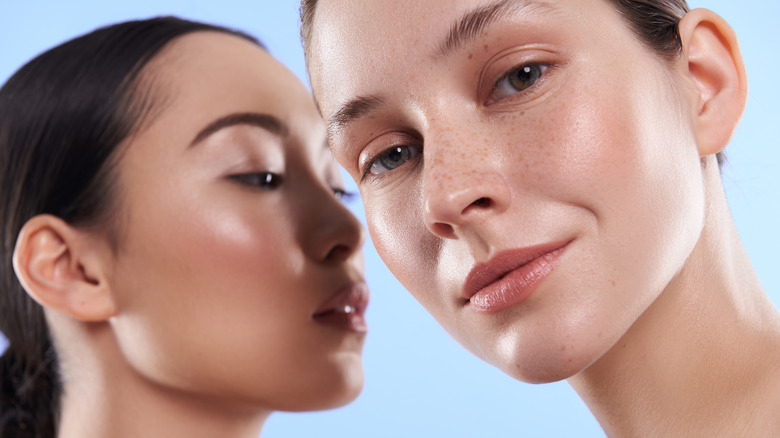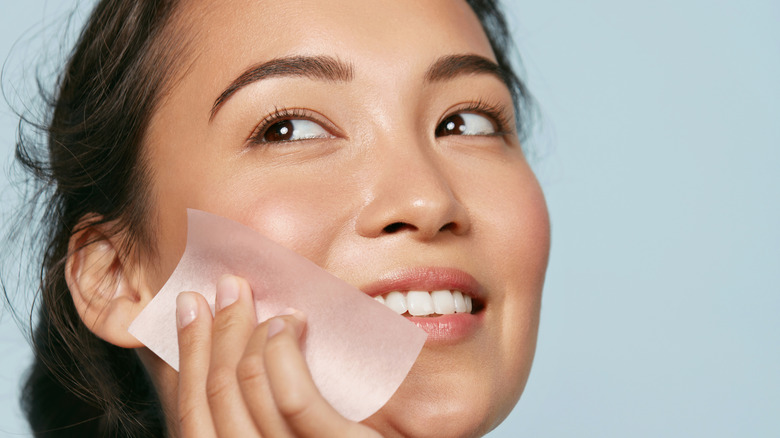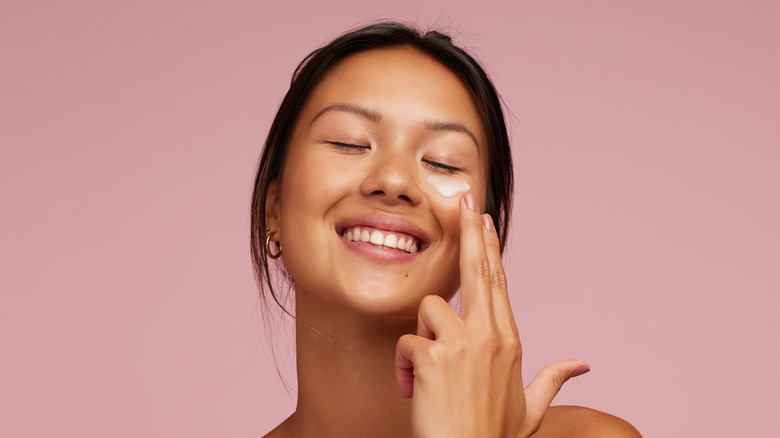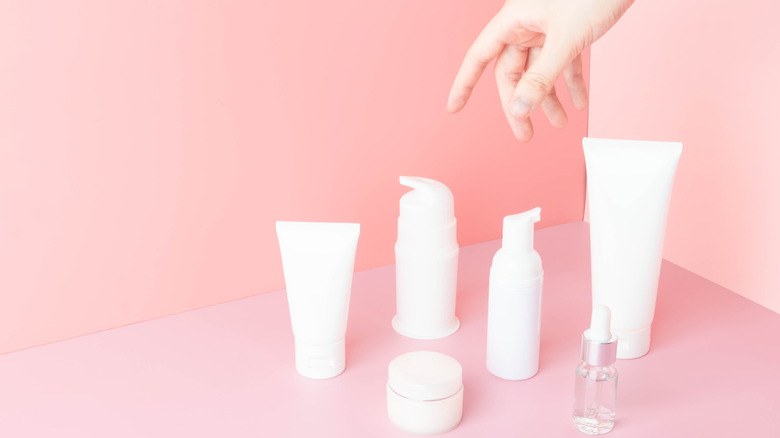Tips And Tricks For Determining What Your Skin Type Really Is
We may receive a commission on purchases made from links.
Several things can impact how well your skincare routine works — how you apply your products, the way you store them, and even what season you're applying them. In addition, your state of health, both mentally and physically, can affect your routine's efficacy. While taking note of how you apply your products is important, your skin itself, or the type of skin you have, plays a major role. According to CeraVe, your skin type is mostly determined by your skin's sebum output. Sebum is the oily substance your sebaceous glands produce and is what classifies skin into types — oily skin has higher levels of sebum production, dry skin has little to no sebum production, and combination skin has some parts of the face that are oily and others that are dry or normal.
You might be asking, why this is important. Knowing your skin type helps you improve your routine, as skincare products are usually created with specific skin types in mind. For instance, an oil-based, cream moisturizer is perfect for someone with dry skin, yet that same moisturizer might feel too heavy for people with oily skin and can clog the pores, notes Kiehl's. Thus, understanding your skin type can help you make better product choices, and ultimately, improve your skin health. Here are some tips to determine what yours might be.
The blotting method
To find out what type of skin you have, SkinKraft recommends the blotting paper or blotting sheet method. Use a piece of blotting paper to pat different areas of your face, including your T-zone and temples, then hold the paper against a source of bright light and check for oil stains.
Little to no oil on the blotting paper means you have dry skin. If the paper has some oil after pressing it to your T-zone but not the other areas of your face, you most likely have combination skin, and if the blotting sheet picks up oil from all parts of your face, you have oily skin. Kiehl's recommends carrying out the blotting paper method at midday or in the evening.
The bare-face method
Also known as the watch-and-wait method, the bare-face method is another tip for finding out what your skin type is. This method measures how much sebum your skin produces when left bare for a while after cleansing.
The Skin Experiment says to cleanse your face with a gentle cleanser and not apply any skincare products for a while. After about 30 minutes, check for how your skin feels. If your skin feels tight or uncomfortable, CeraVe says you most likely have dry skin. Shine or oiliness in your T-zone only indicates combination skin, and normal or comfortable-feeling skin is most likely normal skin.
Pore size indicator
Sebum leaves your skin through tiny holes on the skin's surface called pores. Since sebum production is the main criterion for classifying skin into types, your pore size is a major factor. This means the size or look of your pores can indicate your skin type.
According to SkinVision, people with dry skin tend to have smaller pores due to low sebum production while people with oily skin typically have larger pores. If the pores around your T-zone are larger than the pores on other areas of your face, you might have combination skin. And barely visible pores usually mean you have normal skin (per WebMD).
How often you need moisturizer
SkinVision also adds that your preferred moisturizer and how often you need to apply it might be a clue about what your skin type is. If you find that your T-zone remains oily while you need moisture on the other areas of your face, you most likely have combination skin.
If your skin is supple or flexible all day and regular cream moisturizers feel heavy on it, you most likely have oily skin. And dry skin is the most probable skin type for those whose faces go tight or who don't have a problem with thick moisturizers.
Different needs for different skin types
You also need to understand how different routines vary according to skin type. While people with dry skin need lots of hydration, those with oily skin often benefit from lightweight, gel-form moisturizers. Essentially, different skin types need different products. For dry skin, Simple recommends moisturizers with oils and hydrating ingredients like allantoin, hyaluronic acid, and shea butter, and avoid harsh, stripping cleansers.
For combination skin, Nivea says to use an oil-free moisturizer, applying more on your dryer areas and less on your oilier T-zone. And for oily skin, Tatcha says to exfoliate regularly, but do not overdo it, and opt for lightweight products.





